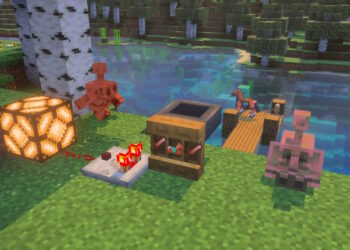Merlin Entertainment’s acquisition of global theme park rights to Minecraft marks a significant step for the iconic game, which has captivated millions. With plans for themed areas at existing locations, this partnership could introduce Minecraft’s unique charm to a broader audience.
The deal signifies an essential collaboration between Merlin, known for its famous attractions like Alton Towers and Legoland, and Microsoft. The intention is to extend Minecraft’s reach beyond digital platforms into physical experiences that families can enjoy together. Microsoft’s vice president of franchise development for gaming, Kayleen Walters, remarked on this synergy: “We are everywhere digitally, Merlin is everywhere physically.” This alignment suggests a promising future where both companies aim to create immersive experiences that reflect the essence of Minecraft.
However, it’s crucial to temper excitement with realism. The initial attractions set to debut in 2026 and 2027 will not be full-scale theme parks but rather themed sections within already-established venues. This approach may limit the depth of interaction fans expect from a fully-fledged Minecraft experience. While these expansions promise novelty, there’s concern about whether they can genuinely capture the game’s expansive universe or merely serve as superficial nods to it.
Merlin’s past collaborations with brands such as Lego and Peppa Pig showcase their expertise in creating engaging experiences tailored towards family audiences. Scott O’Neil, chief executive of Merlin Entertainments, emphasized their commitment to partnering with globally recognized brands when he stated: “When we look for partners, we look for the right people, scale, and community.” Such partnerships have historically yielded successful ventures. However, translating the intricate details of gameplay into tangible experiences poses challenges that must be addressed thoughtfully.
The recent trend among video game franchises venturing into theme parks, evident with Nintendo’s ongoing projects, indicates a growing market desire for interactive entertainment spaces based on beloved games. Whether Minecraft can establish itself effectively amidst this competitive landscape remains an open question.
As fans await more information regarding these upcoming attractions, detailed design elements, or specific features yet undisclosed, it’s Necessary to maintain cautious optimism about how well they translate the rich world of Minecraft into real-life settings without losing what makes it unique in its original format.
























